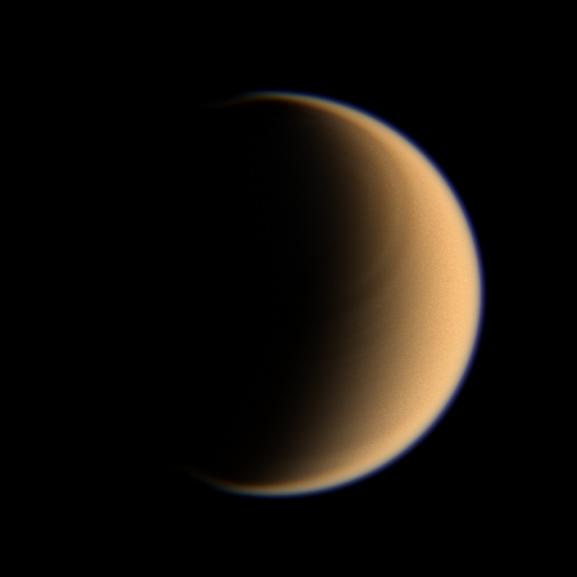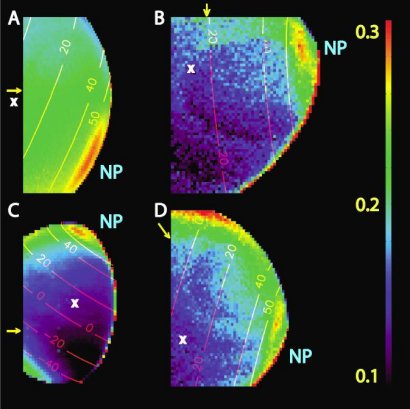The question of whether Titan can retain its thick, organic atmosphere for the rest of its lifetime could hinge on how efficiently methane molecules were packed inside water “crates” during a period of the moon’s formation.
Dr Vasili Dimitrov, who spoke at the European Planetary Science Congress in Potsdam, said, “If Titan runs out of methane and loses its ‘veil’, it will become a completely different type of astrophysical body. Methane drives the chemical reactions in Titan’s atmosphere but, because it’s so highly reactive and therefore short-lived, it must be replenished. We need to find out just how much methane is stored in the primordial reserve in Titan’s interior at a level where it can escape to the surface. To do this, we need to know how efficiently the methane molecules were packed away when the reserve formed.“

The trapped methane can exist only in molecular structures called clathrates, which occur when “host” water molecules form a cage-like structure around a smaller “guest” molecule (in this case methane). The water crystallizes in a cubic system, rather than the hexagonal structure of normal ice, so that the cages are arranged in body-centred cubic packing. However, not all of the cages are occupied. The maximum efficiency in filling the cages is achieved only if conditions are optimal e.g. the structure forms slowly at temperatures close to absolute zero.
Dr Dimitrov said, “The conditions of Titan’s accretion and evolution are poorly understood, so we cannot yet say how many of the cages were filled and how much methane is contained in the reserve. In addition, we need to do some more experiments in the laboratory to find out more about the transfer of materials between layers.”
Beneath Titan’s surface, there is a permafrost crust that sits on a liquid or semi-liquid mixture of ammonia, methane and water. Beneath that, an icy layer surrounds a rocky core. It is unclear whether methane trapped in the icy layer next to the core has any means of escape. Dr Dimitrov said, “At the moment we can work out an upper and lower limit for the packing efficiency, but this doesn’t tell us which side of the critical value Titan’s methane stockpile falls. With more experiments, together with the data supplied by the Cassini-Huygens mission, we should be able to answer the question of whether this fascinating world will keep its veil of mystery.”

Being able to estimate the packing efficiency of methane in clathrates could also have important applications back on Earth. According to some estimates, the overall methane stock in the Earth’s natural clathrates may be four times higher than the oil stock. Thus, methane extracted from clathrates could one day become a major fuel source for the mankind.
Source: Royal Astronomical Society






Comments